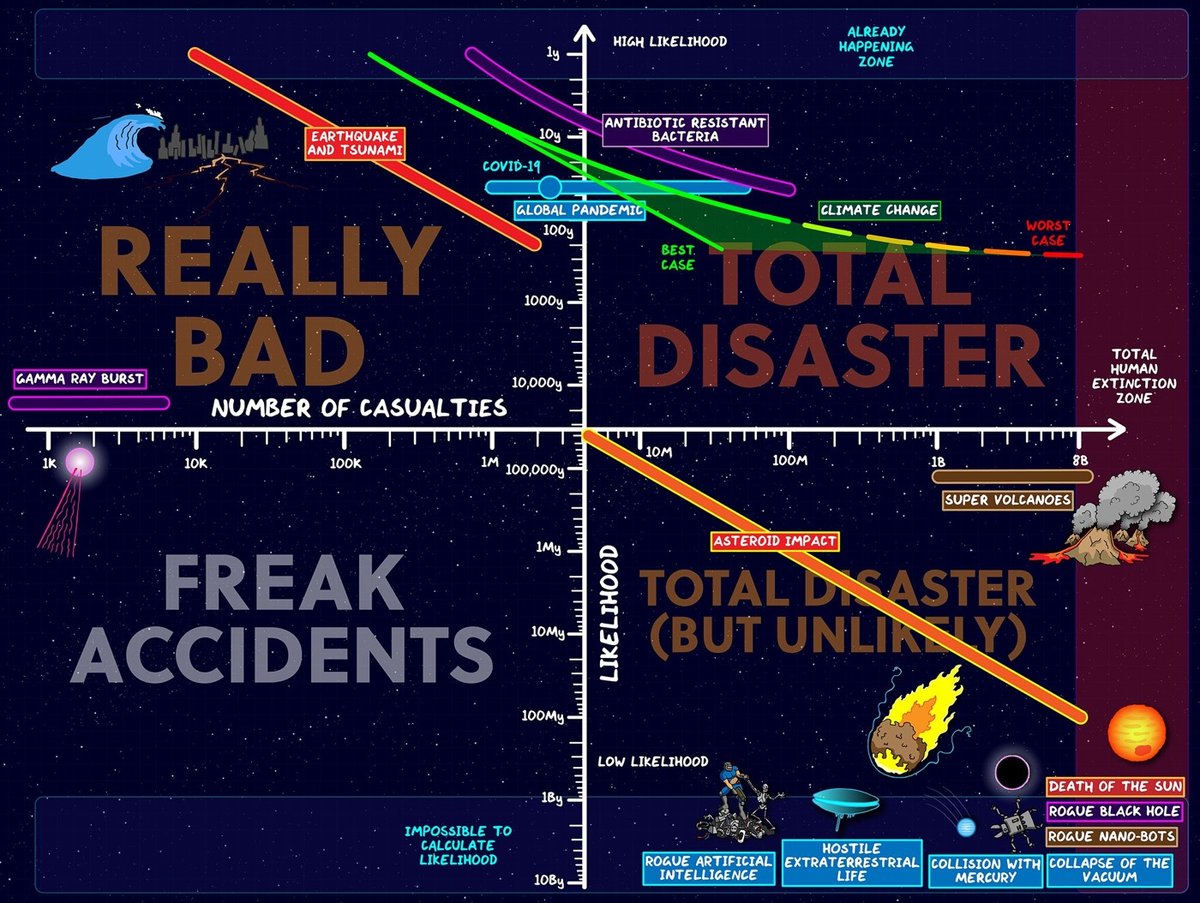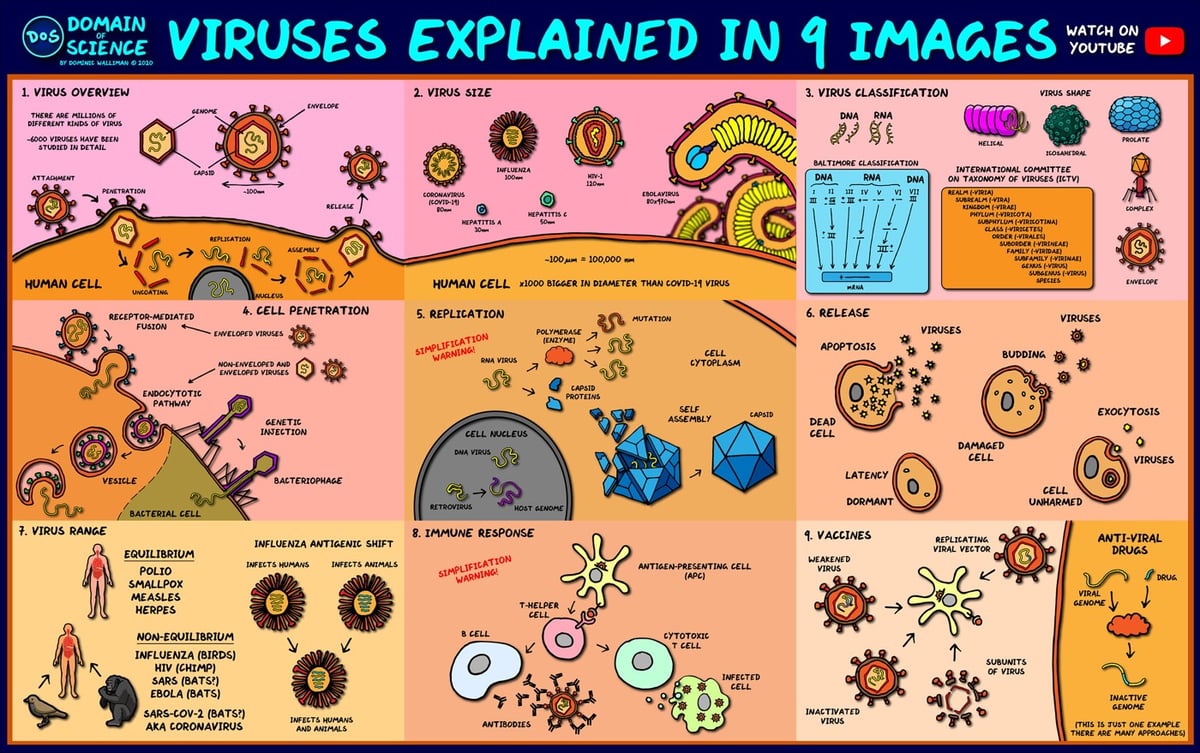The Chart of Doom: Ranking Apocalypses

Spurred by the pandemic — what he calls “the first experience we’ve had of a global disaster affecting every single person on Earth”1 — Domain of Science’s Dominic Walliman takes stock of many of the possible catastrophes that might befall humanity, ranking possible threats based on their likelihood and the number of potential casualties.
This year was the first experience we’ve had of a global disaster affecting every single person on Earth. And also how unprepared society was to deal with it, despite plenty of people giving warnings that this was going to happen at some stage.
But in the midst of all the doom I started to wonder, what other things could threaten humanity, that we are not thinking about? So I made the Map of Doom to list all the threats to humanity in one place.
The result is the quadrant chart and the video above as well as the Map of Doom.
One could imagine a third dimension of this chart: what, if anything, humans can do about each of these threats. Earthquakes can be detected, buildings can be designed to withstand them, and evacuation procedures enacted and prioritized. Many effects of climate change can be mitigated. Asteroids can be detected, but doing something about them might prove difficult. We’ve lowered the threat of nuclear war — for now. Supervolcanoes? Yikes.
You can find a list of references used in the video’s description. (via open culture)
Well, I think you could make good arguments for Western colonial expansion and capitalism here. Oh and some past volcanic eruptions.↩






Stay Connected